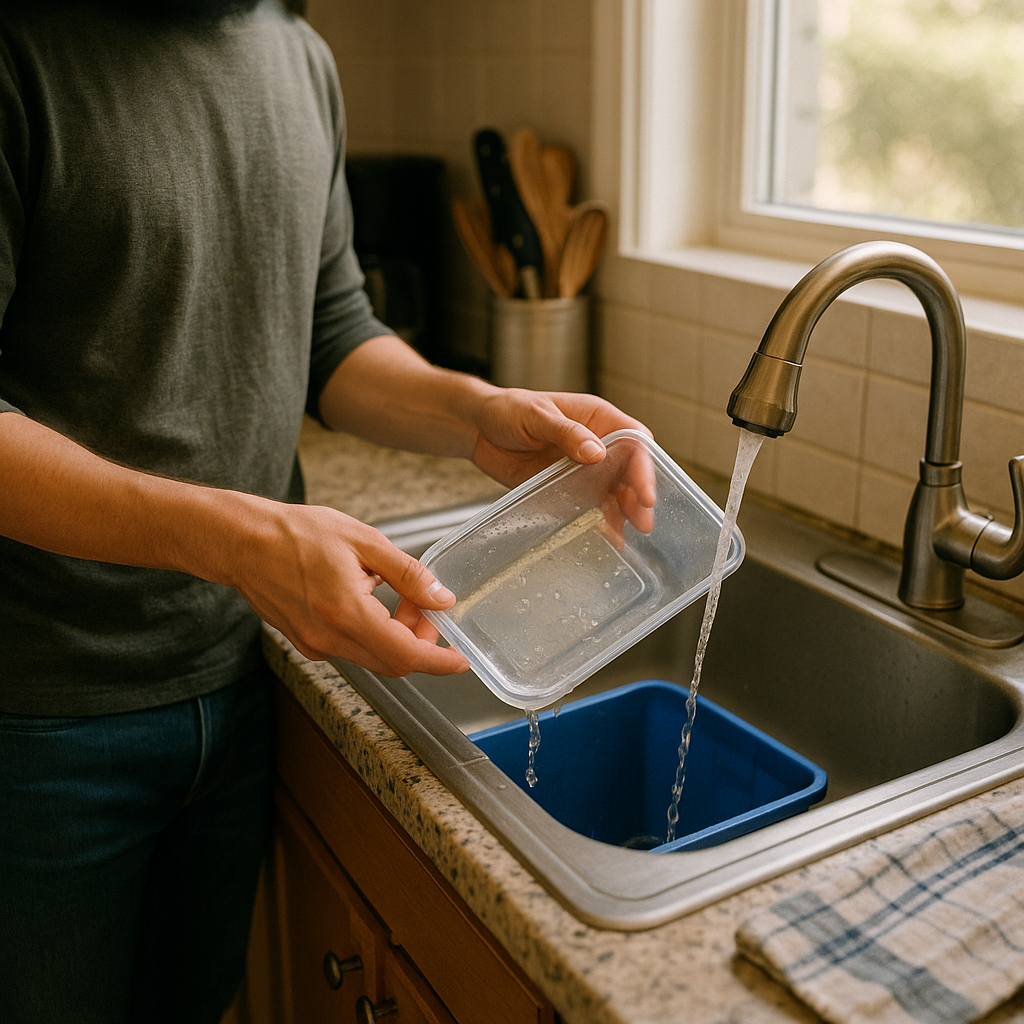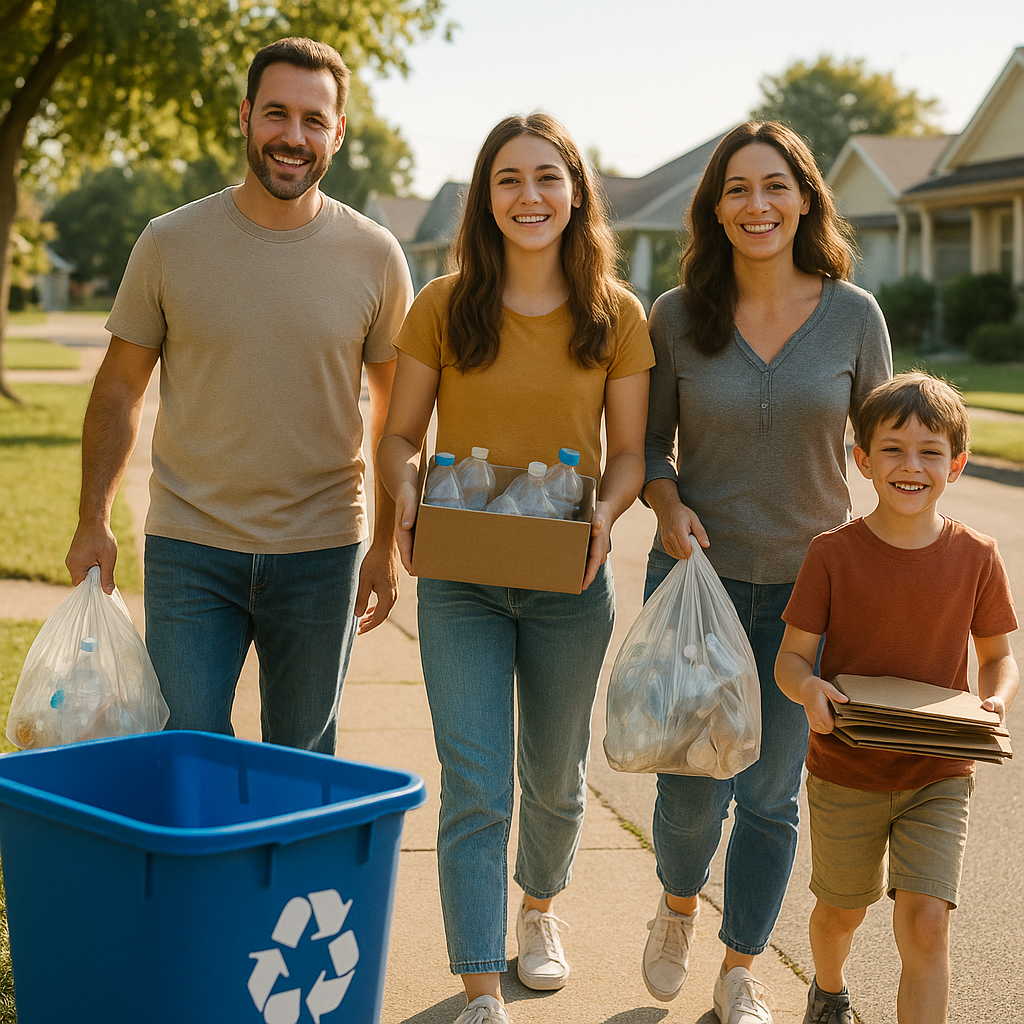5901 Botham Jean Blvd, Dallas, TX 75215
Basic Recycling Guidelines for Residents
August 15, 2025Proper recycling begins with understanding the basic rules. Most recycling programs across the country operate on three key principles that help ensure materials are processed efficiently and transformed into new products.
The first rule is to recycle only bottles, cans, paper, and cardboard. These materials form the backbone of most residential recycling programs because they are easily processed and have established markets for reuse. The second rule requires keeping food and liquid out of your recycling. Even small amounts of contamination can render entire batches of recyclables unusable. The third rule prohibits putting loose plastic bags or bagged recyclables in your bin, as these items can jam sorting equipment and halt the entire recycling process.
For successful recycling, items should be clean, dry, and placed loosely in your recycling container. This simple preparation ensures that what you put in your bin is actually recycled instead of being diverted to landfills due to contamination. Following these straightforward guidelines helps maximize the environmental benefits of recycling while supporting local waste management systems.
What Items Can Residents Recycle?
Knowing what belongs in your recycling bin is essential for effective waste management. Most residential recycling programs accept a core set of materials with established recycling markets and processing methods.
Common household recyclables are categorized for easy remembrance. While most programs across the country accept these standard items, specific requirements may vary slightly by location.
Paper and Cardboard
Paper products are the largest category of recyclable materials by volume. Common curbside programs accept clean and dry paper items such as:
- Flattened cardboard boxes (shipping, cereal, shoe boxes)
- Newspapers and inserts
- Magazines and catalogs
- Office and printing paper
- Mail (including envelopes with plastic windows)
- Paper food boxes (cereal, pasta boxes)
Keep paper items dry and free from food contamination. Flattening cardboard boxes saves space in recycling bins and trucks, improving collection efficiency.
Metal Recyclables
Metals are valuable in the recycling stream due to their durability and reusability. Common metal recyclables include:
- Aluminum beverage cans
- Food cans (soup, vegetables, pet food)
- Clean aluminum foil and trays
- Empty aerosol cans (with plastic caps removed)
Metals can be recycled repeatedly without degrading, making them especially valuable. Recycling aluminum saves significant energy compared to mining new ore.
Plastic Containers
Not all plastics are equal in recycling. Commonly accepted plastic items include:
- Plastic bottles with necks (water, soda, juice)
- Milk and juice jugs
- Laundry detergent containers
- Plastic food containers (yogurt, margarine tubs in some areas)
- Plastic jars and bottles with lids attached
The recycling symbol and number on plastics can help identify what’s accepted locally. However, not all items with recycling symbols are accepted in local programs.
Recycling Preparation Tips
Proper preparation of recyclables ensures efficient processing:
- Empty and rinse containers to remove food residue
- Keep items loose in the bin – never bag recyclables
- Leave lids and caps on plastic bottles and containers
- Flatten cardboard boxes to save space
- Remove plastic liners from paper packaging
Contamination from food, liquids, or non-recyclable items can jeopardize recycling. When unsure if something is recyclable, it’s best to throw it out.
Items That Don’t Belong in Recycling
Understanding what doesn’t belong in your recycling bin is crucial. Common contaminants include:
- Plastic bags and film (return these to grocery stores)
- Food waste and liquids
- Styrofoam packaging
- Greasy pizza boxes or food-soiled paper
- Electronics, batteries, or hazardous waste
- Clothing or textiles
Always check with your local waste management provider for specific guidelines, as programs vary by location. Many communities offer online databases for residents to check the recyclability of specific items.
What Items Should Not Be Recycled by Residents?

Despite good intentions, many residents mistakenly place non-recyclable items in recycling bins. This contaminates batches of recyclable waste. Research reveals that nearly one in four items in recycling bins should not be there, with contamination rates rising in recent years.
Understanding what cannot be recycled is as important as knowing what can be. The following items should never be placed in your standard recycling bin:
Common Household Non-Recyclables
Plastic bags and film wrap are problematic as they tangle in recycling facility machinery, causing breakdowns and delays. Most grocery stores provide collection points for clean plastic bags.
Styrofoam and polystyrene foam containers cannot be processed in standard recycling programs. Their lightweight nature and chemical composition make them difficult to sort and process economically. These items should go in regular trash unless your community offers specialized foam recycling.
Food waste and food-contaminated items pose serious contamination risks. Pizza boxes with grease stains, used paper plates, and food containers with residue can ruin recyclable paper batches. Food waste should be composted when possible.
Hazardous and Special Waste Items
Household hazardous waste requires special handling due to potentially dangerous properties. Oil-based paints, cleaning products, pesticides, and automotive fluids contain toxic compounds that can harm workers and equipment. Most communities offer periodic hazardous waste collection events for these materials.
Batteries and electronics contain heavy metals and hazardous components that can leach into soil and water when improperly disposed. Many retailers offer take-back programs for batteries, while electronics often require drop-off at designated collection sites.
Yard waste, including grass clippings and branches, is banned from landfills in many areas. These materials should be composted or collected through separate yard waste programs rather than placed in recycling bins.
[[artifact_table]] Common Non-Recyclable Items and Their Proper Disposal Methods [[/artifact_table]]Personal Items and Textiles
Clothing, shoes, and textiles cannot be processed in standard recycling facilities. Instead, donate usable items to charitable organizations or look for textile recycling drop-off locations. Many retailers now offer collection bins for worn-out clothing.
Diapers, medical waste, and personal hygiene products must never be recycled. These items pose health risks to workers and contaminate recyclable materials. Always dispose of these items in regular trash.
Soiled paper products such as used paper towels, napkins, and tissues cannot be recycled. The fibers in these items are too short for reprocessing, and any contamination makes them unsuitable. These items should be composted or placed in regular trash.
Hard-to-Recycle Materials
Certain glass items like mirrors, window glass, and drinking glasses have different melting points than container glass. These items can contaminate glass recycling. Check with local waste authorities for proper disposal options.
Tools, scrap metal, and appliances cannot go in standard recycling bins. These items may be recyclable at scrap yards or through special collection programs but require separate handling.
When unsure about whether an item can be recycled, check with your local waste management authority. Most provide detailed guidelines specific to your community’s recycling program as rules can vary significantly between areas.
How Can Residents Prepare Items for Recycling?

Proper preparation of recyclables is crucial for efficient processing at recycling facilities. Correctly prepared items are more likely to be recycled rather than sent to landfills due to contamination. Follow these guidelines to ensure your recyclables successfully pass through the sorting process.
Clean and Empty Containers
Rinse or scrape food residue from containers before recycling. While containers don’t need to be spotless, they should be “spatula clean.” This step prevents contamination, particularly of paper products.
Empty all bottles, jars, and cans completely. Even small amounts of liquid can ruin batches of paper recycling when materials are processed together in single-stream systems. After rinsing, let containers dry before placing them in your bin.
For sticky items like peanut butter jars or salad dressing bottles, add a drop of dish soap and some water, then shake to clean. For tougher residue, use a spatula to remove as much as possible.
Flatten and Reduce Volume
Break down cardboard boxes to save space in your recycling bin. First, remove non-recyclable packing materials like Styrofoam or plastic film. Flattened cardboard takes up less room in collection trucks and improves sorting efficiency.
Crush plastic bottles and aluminum cans to make more space in your bin, but don’t flatten them completely. Maintain their basic shape to avoid confusing sorting machines.
Keep Recyclables Loose
Never bag your recyclables; place all items loose in your recycling bin. Plastic bags jam sorting equipment at processing facilities and can cause entire loads to be rejected. Materials in plastic bags often end up in landfills because workers don’t have time to open each bag.
If you have extra recyclables that won’t fit in your bin, consider obtaining additional containers from your local provider rather than using plastic bags. Some communities allow overflow recyclables in paper bags or cardboard boxes beside your regular bin.
Special Handling for Specific Items
For paper products, ensure they stay clean and dry. Wet or greasy paper can’t be recycled. If a pizza box is greasy, tear off the soiled parts and recycle the clean sections.
When recycling bottles and jars, you can usually leave the caps on. Most modern facilities can process bottles with caps. Check your local program’s guidelines to confirm this practice is accepted.
Break down larger items to avoid jamming your bin or collection equipment. Oversized materials can damage sorting machinery if not properly prepared.
Conclusion: Empowering Residents to Recycle Right

Proper recycling is an effective way for individuals to contribute to environmental sustainability. By adhering to three basic rules—recycling only appropriate items, keeping materials clean and dry, and avoiding bagging recyclables—residents can significantly reduce landfill waste and conserve natural resources. When each household commits to recycling correctly, the collective impact is substantial, reducing greenhouse gas emissions and conserving energy that would otherwise be used in processing raw materials.
Contaminated recycling often ends up in landfills despite good intentions. When unsure about an item’s recyclability, it is better to place it in the trash than risk contaminating a whole batch of recyclables. Check your local recycling guidelines regularly, as accepted items can vary by location and change over time. By staying informed and making conscious decisions about waste disposal, you actively contribute to a more sustainable future for both your community and the planet.
For professional recycling services and sustainable waste management solutions, contact Okon Recycling at 214-717-4083.
